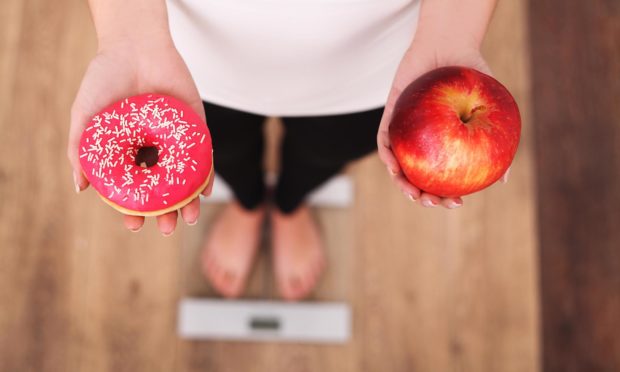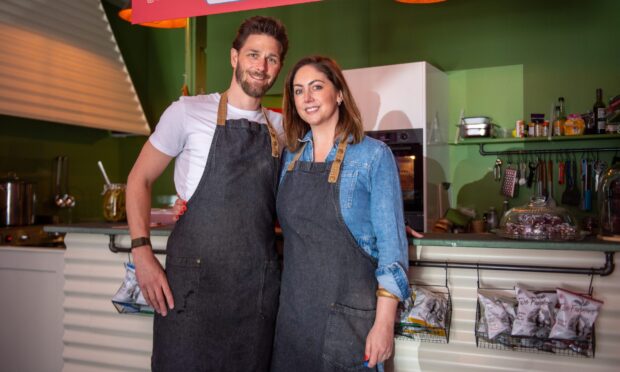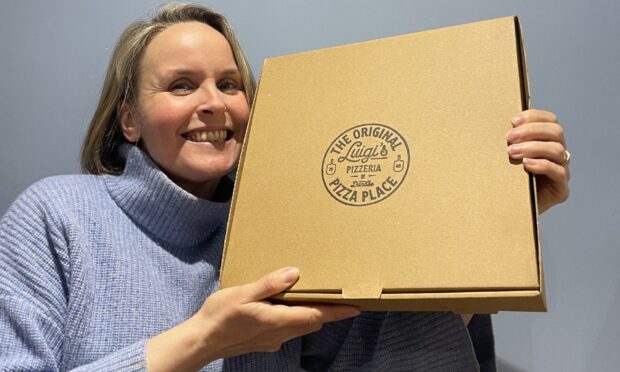As a nationwide study finds two in three Scots adults are overweight or obese, the nation still has a long way to go in terms of tackling diet goals. Rebecca Shearer finds out why – and what’s to be done about it.
Scotland’s diet is tipping the scales in the wrong direction due to our fondness for fast food, takeaways, unhealthy snacks and soft drinks, according to a new report from Food Standards Scotland.
The research revealed around 65% of adults in the nation are currently obese or overweight, with a mix of external factors to blame, including unhealthy food becoming cheaper and a culture of promoting such products in supermarkets and shops.
It was produced as part of the public sector food body’s update on the progress – or lack of progress – we’ve made towards meeting national dietary goals and what needs to be done about it.
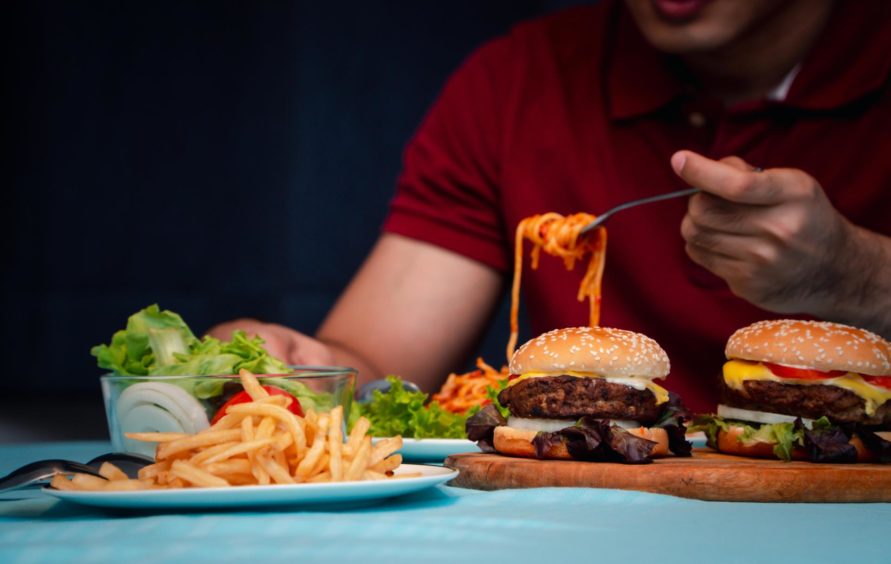
Where are we now?
In the report, researchers outlined the fact that two out of three adults in Scotland can be classed as being “overweight or obese” and 30% of Scotland’s children are at risk of falling into this category as they get older.
Researchers also remarked how the Scottish diet is generally constructed, with popular red and processed meat products increasing our risk of bowel cancer, an increased intake of salt putting us at risk of high blood pressure, and sugary drinks increasing our chances of developing type 2 diabetes.
In 2018, the statistics were revealed for many of Scotland’s common diet-related diseases, with 6,615 deaths linked to coronary heart disease and 2,072 from stroke, 29% of the adult population having high blood pressure and 29% of children at Primary 1 age presenting with tooth decay.
Takeaways and food away from home
Prior to the 2020 coronavirus pandemic, the nation’s love of takeaways and food obtained outside the home (meaning in restaurants and cafes) was clear, as we spent around £820 million on takeaways in 2019 alone.
In 2019, the top 10 food and drink items purchased for consumption outwith the home (i.e. not bought in supermarkets or food stores) included coffee (23%), sandwiches (20%), soft drinks (27%), diet cold drinks (11%), tea (9%), confectionery (9%), cakes, pastries and biscuits (7%), water (7%), chips (6%) and crisps, snacks and popcorn (5%).
In the same year, according to the research, 11% of the occasions we left our homes throughout the year was to go and get a takeaway. The most popular takeaway meals and dishes in 2019 included ordering sides (30%), chicken, including fried meals (24%), burger meals (23%), Chinese and Thai meals (15%), fish (13%) and pizza (12%).
In 2019, each person in Scotland made on average nearly 131 purchases of on-the-go food, such as visits to bakeries, sandwich shops, supermarkets and convenience stores, with these foods being consumed mostly at the workplace (37%), outside (27%) or when travelling (17%).
Discretionary food
The same research also found that much of the Scottish diet prior to the pandemic was made up of discretionary foods – those that are energy dense, with lots of calories and very little nutritional value, such as confectionery, cakes, biscuits, alcoholic drinks, pastries, savoury snacks and sugary drinks.
In addition, 20% of all calories and fat and 50% of the sugar we consume comes from these discretionary products and it’s thought that an average seven-year-old boy in Scotland today will eat more than his bodyweight in discretionary food every year.

Much of our intake of these products was expected to be alleviated in April 2018, as the Soft Drinks Industry Levy (SDIL), also known as the “sugar tax”, came into effect, as a way of attempting to tackle the issue of childhood obesity. Though it forced a reduction in the amount of sugar in drinks affected by the tax, the purchase of sugary soft drinks which were unaffected by the levy increased between 2014 and 2018.
A similar trend was found with multipacks of crisps, which decreased in size by 10%, despite the volume at which they were purchased increasing, and the amount of crisps, savoury snacks and confectionery bought by the average Scottish household between 2014 and 2018 being higher than the years prior.
Promotions
In 2018, around 32% of the overall food we bought in shops and supermarkets came under an offer or promotion, with as much as 74% of confectionery we purchased falling under this buying habit.
Despite research showing that, on average, it can be more expensive to buy food on promotion than at regular price, products such as seasonal or novelty packs of confectionery and multipacks and sharing bags of crisps are most frequently purchased under some sort of offer.
Children
The research also highlights the impact that the Scottish diet is having on the nation’s young people. In 2019, for example, quick service restaurants were one of the most frequented places for children under the age of 10 and as a nation we spent around £515 million on children’s food.
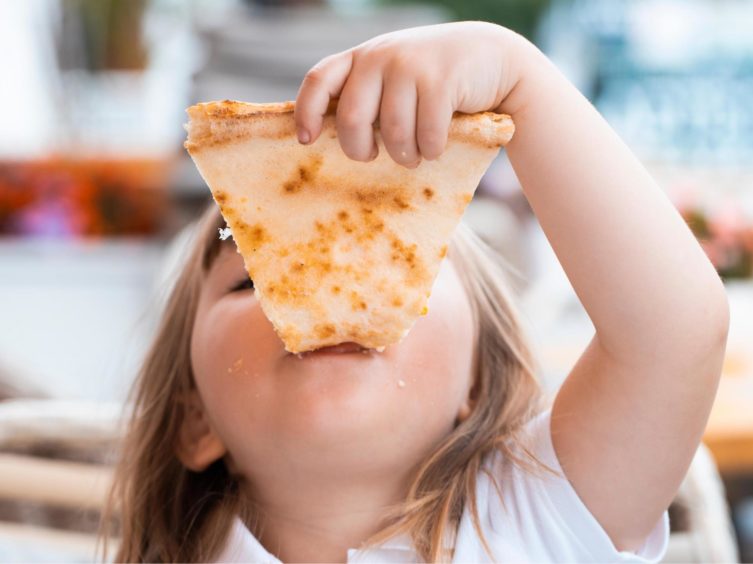
In addition, families or people eating out with young children made on average 59 trips each year and spent around £3.31 per item, with the top fast foods and out-of-home foods for children during 2019 being chicken, including fried (36%), burgers (21%), pizza (10%), hot dogs (10%) and fish (9%).
Researchers also found that children were most likely to be taken to pizza or chicken outlets that offered a children’s menu.
The five goals
In July 2018, the Scottish Government published a report called A Healthier Future: Scotland’s diet and healthy weight delivery plan which sets out thecountry’s dietary goals for the next few years. Their goals are as follows:
- Children have the best start in life – they eat well and have a healthy weight: The aim is to halve childhood obesity by the year 2030, with three in 10 children currently at risk of being overweight or obese.
- The food environment supports healthier choices: Making it easier for all to make positive dietary choices by restricting the promotion and marketing of less healthy foods and reducing the energy density of foods.
- People have access to effective weight management services: It is important that there is fair access to suitable, supportive and effective weight management services that provide support and advice, free from stigma and bias, to help more children, young people and adults maintain and achieve a healthy weight.
- Leaders across all sectors promote healthy diet and weight: The government cannot do this alone and so collective leadership and partnership across the public, private, thrid and community sectors is needed to promote healthier food and ensure everyone can eat well.
- Diet-related health inequalities are reduced: A strong focus on preventative measures to help reduce food poverty and early intervention from pre-birth to adolescence, with actions designed to help empower people to make better decisions.
Where do we go from here?
One of the biggest recommendations from the FSS research is that, as a nation, we need to reduce the amount of takeaways and discretionary food we eat by at least half, despite the fact we should be eating much less than that overall.
Though very little progress has been made to improve our diets and obesity in Scotland, with a major setback coming from the recent lockdown and pandemic, mindsets towards what we consume are beginning to change, the research states.
The FSS report concluded that 91% of people believe cheap, fast food is too readily available, 44% of people would support banning promotions on unhealthy products, 78% of people think children’s menus should offer more healthy choices, with an additional 71% stating they would like to see children offered smaller portions and 64% of people think cafes and restaurants should display calories on their menus.
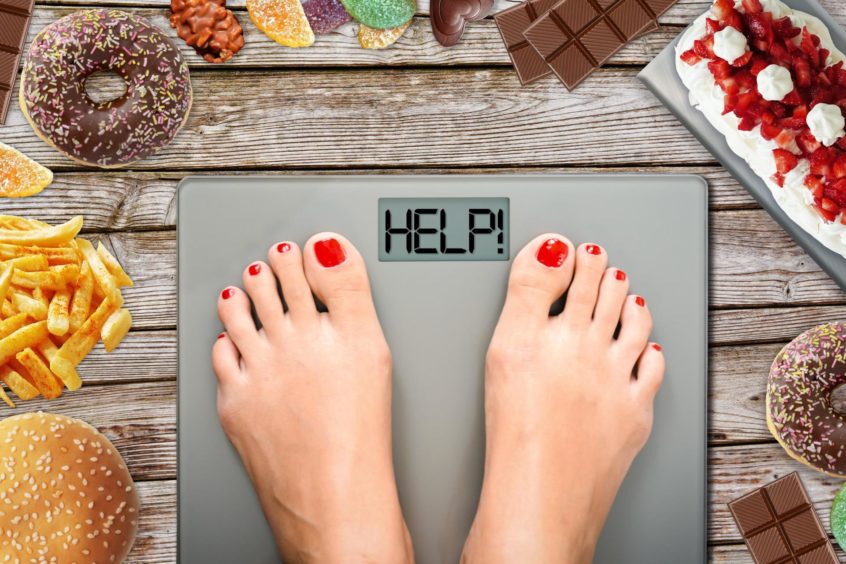
Scotland has been consistently missing its dietary goals as a nation for more than 17 years, with the energy density of the average Scottish diet being 40% higher than the intended goals, set out in 2013.
Other recommendations from the report included consumers being asked to choose a healthier diet, consisting of fewer discretionary foods and more fruit, vegetables and fibre.
Since the pandemic, evidence shows that some of the data set out above (from 2018-2019) will have changed, as 28% of people said they ate healthier meals more often during lockdown, and around a third claiming they purchased fewer takeaways.
Before real progress can be made in terms of diet, individual consumers, the media, the food and drink industry and the government have all been asked by Food Standards Scotland to play their part in changing the landscape of the nation’s food environment and helping to tip the scales in the opposite direction – towards a healthier lifestyle.
